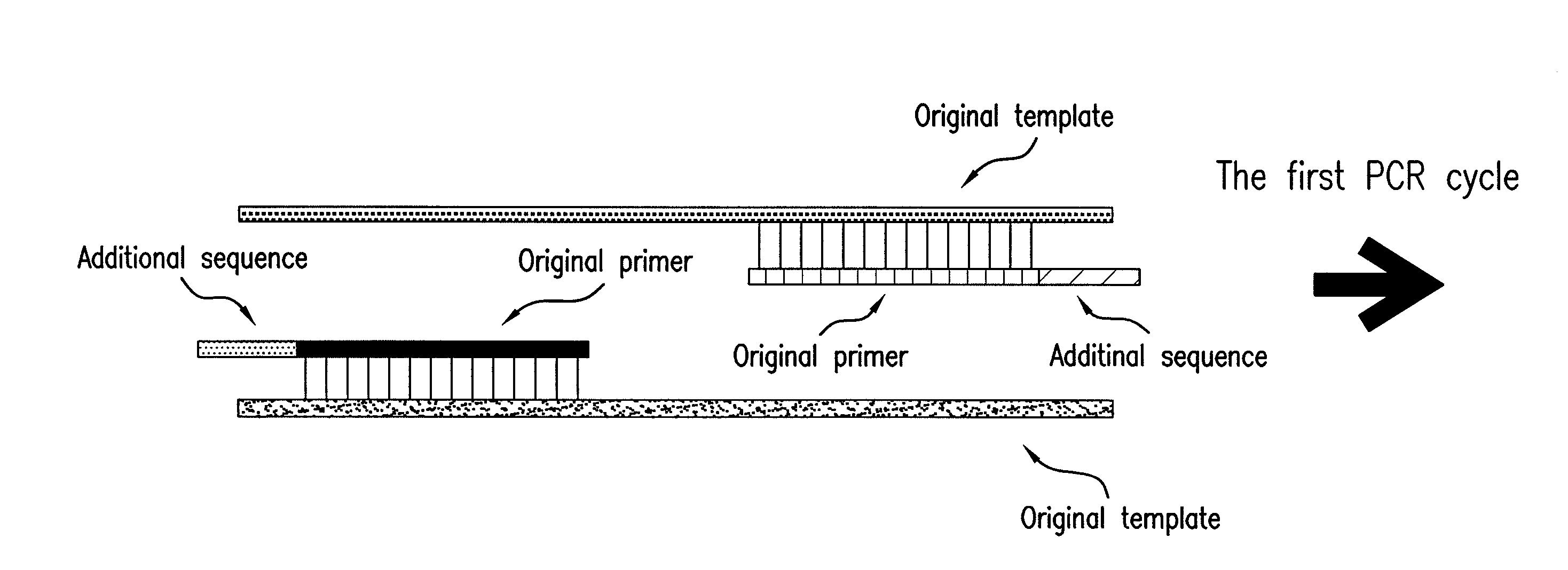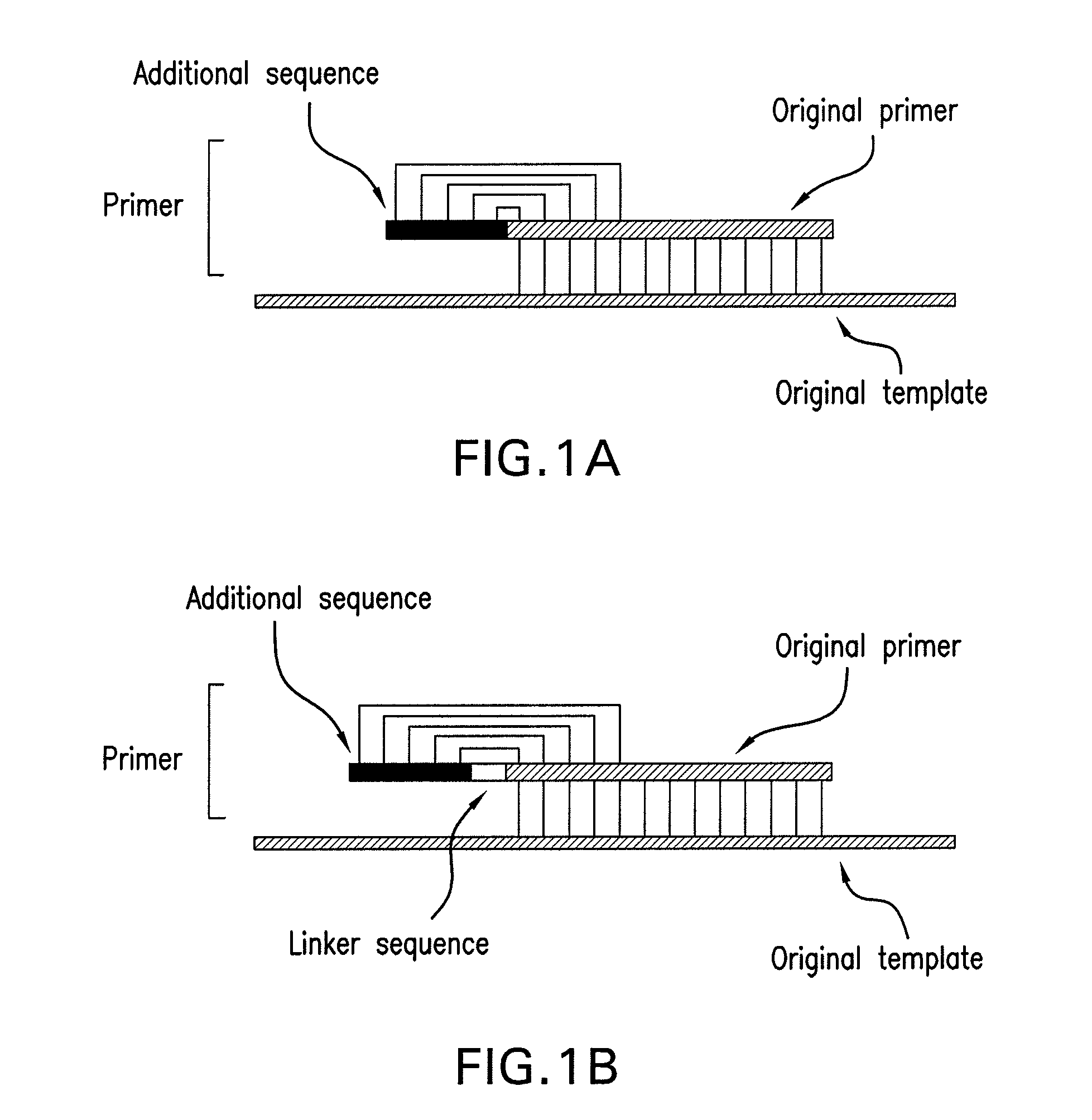PCR primer capable of reducing non-specific amplification and PCR method using the PCR primer
a technology of non-specific amplification and primer, which is applied in the field of pcr primer capable of reducing non-specific amplification and pcr method using the pcr primer, can solve the problems of serious non-specific amplification, non-specific amplification can also be significantly induced, and non-specific amplification can be reduced, so as to improve specificity, reduce cost, and reduce the effect of non-specific amplification
- Summary
- Abstract
- Description
- Claims
- Application Information
AI Technical Summary
Benefits of technology
Problems solved by technology
Method used
Image
Examples
example 1
Inhibition of Non-Specific Amplification
[0053]Non-specific amplification inhibitory effect of the method of the present invention was investigated as follows. An original forward primer having the sequence of 5′-CCTATCAACTTTCGATGGTAGT-3′(22-mer, SEQ. ID. NO: 1) and an original reverse primer having the sequence of 5′-CGCTCCACCAACTAAGAACG-3′(20-mer, SEQ. ID. NO: 2) were prepared. And primers having an additional reverse-complementary sequence were prepared. The prepared forward primer had the sequence of 5′-GATAGGCCTATCAACTTTCGATGGTAGT-3′(28-mer, SEQ. ID. NO: 3) and the prepared reverse primer had the sequence of 5′-GGAGCGCGCTCCACCAACTAAGAACG-3′(26-mer, SEQ. ID. NO: 4). The underlined parts in the above sequences were the additional sequences added for complementary binding with 5′-terminus of the original primer. In this example, the original primer not added with an additional sequence and the primer prepared by the method of the present invention which characteristically contained...
example 2
Effect of the Length of a Primer
[0058]The effect of the length of a primer was investigated, for which primers were designed and prepared with different lengths. In this example, the original primer was prepared to be shorter than that of example 1. The original forward primer of this example had the sequence of 5′-CCTATCAACTTTCGAT-3′(16-mer, SEQ. ID. NO: 5) and the original reverse primer had the sequence of 5′-CGCTCCACCAACTAAG-3′(16-mer, SEQ. ID. NO: 6). The primers having an additional reverse-complementary sequence were also prepared according to the method of the present invention. The prepared forward primer in this example had the sequence of 5′-GATAGGCCTATCAACTTTCGAT-3′(SEQ. ID. NO: 7) and the prepared reverse primer had the sequence of 5′-GGAGCGCGCTCCACCAACTAAG-3′(SEQ. ID. NO: 8). The underlined parts in the above sequences are the additional reverse-complementary sequences. In this example, both the primer of the present invention and the common original primer not contain...
PUM
| Property | Measurement | Unit |
|---|---|---|
| Fraction | aaaaa | aaaaa |
| Structure | aaaaa | aaaaa |
| Ratio | aaaaa | aaaaa |
Abstract
Description
Claims
Application Information
 Login to View More
Login to View More - R&D
- Intellectual Property
- Life Sciences
- Materials
- Tech Scout
- Unparalleled Data Quality
- Higher Quality Content
- 60% Fewer Hallucinations
Browse by: Latest US Patents, China's latest patents, Technical Efficacy Thesaurus, Application Domain, Technology Topic, Popular Technical Reports.
© 2025 PatSnap. All rights reserved.Legal|Privacy policy|Modern Slavery Act Transparency Statement|Sitemap|About US| Contact US: help@patsnap.com



